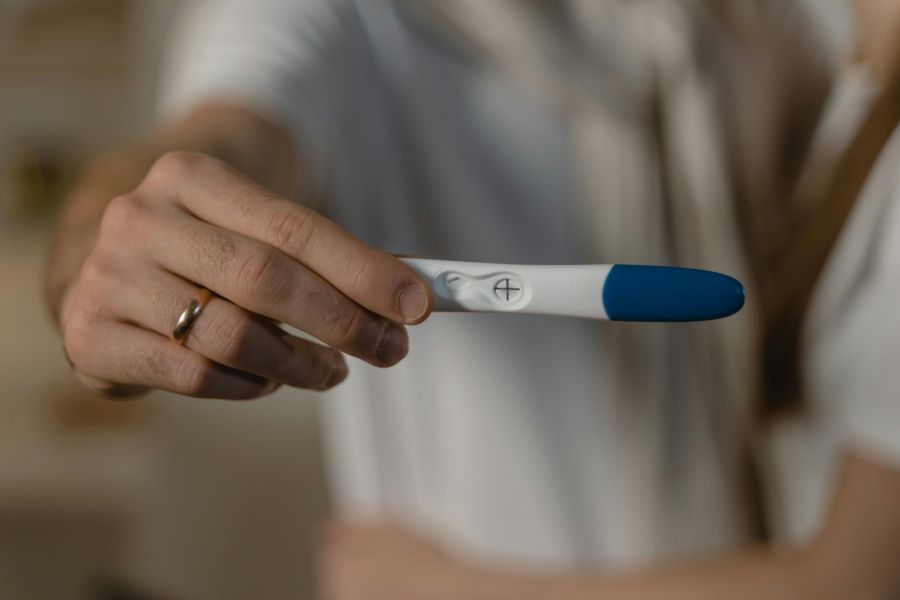At nine days past ovulation—or 9dpo—many people start wondering if a pregnancy test might work. This is early, like standing at the edge of a pool and dipping a toe in. The 9dpo pregnancy test accuracy can vary, because hormone levels (hCG) are just starting to rise. For some, this feels hopeful; for others, it’s a confusing wait. Many on online forums, like Mumsnet, say they saw a faint line at this time. Those who check with a 9dpo pregnancy test faint line often feel a mix of excitement and doubt. It’s like spotting a small spark before a sunrise. A guide like this aims to mix science—with clear facts—and real feelings, so someone reading can think, “I’m understood.” It also sticks close to trusted sources, to keep it trustworthy.
Why Test At Nine Days Past Ovulation
Thinking about a 9dpo pregnancy test often feels like trying to guess the weather a week ahead—it’s possible, but not always right. Hormone levels at 9dpo are usually low, but some tests are sensitive enough to pick them up. When someone tests this early, they often ask: “How accurate is a 9dpo pregnancy test accuracy wise?” The short answer: not perfect. Medical sources suggest waiting another few days for high certainty. But emotionally, knowing something—even a small hint—feels like holding a note before the symphony starts. One user on a this forum said the faint line gave them hope, while others urged patience. So testing at 9dpo demands both curiosity and caution. It’s smart to pair a test with a plan: test again at 11 or 12 dpo to catch the hormone rise more clearly.
Reading Results: Positive, Negative, And Faint Lines

When someone sees this positive, it usually means the hormone hCG is present in their urine. But faint lines show up for many reasons—low hormone levels, test errors, or timing. Imagine painting with watercolors: a pale stroke may become vivid as more paint is added. A 9dpo pregnancy test faint line might deepen after a day or two. On the other hand, a negative result at this stage doesn’t mean no pregnancy. It could simply mean it’s too early for detection. A 9dpo pregnancy test negative might shift to positive in later days. In real life, many share these stories: “My 9dpo test was blank, but at 11 dpo a line appeared.” Those experiences help beginners know that this early step is just one chapter. It’s wise to test again after 11 dpo or wait for a missed period to confirm.
Tracking Your Journey: Progression And Twins
Some wonder about 9dpo pregnancy test progression, hoping lines get darker over days. That progression can show rising hCG. A test strip used over the next days may gradually change. That slow change can feel like watching a flower bud open. On rare occasions, someone may test early and discover this twins—two strong lines early on—and feel surprise or joy. But more often, early testing reveals only a faint line, and progression becomes clear later. Tracking progression also teaches patience and hope. It’s a reminder that bodies work at their pace. Many who share on forums like Mumsnet find comfort in seeing that progression isn’t always dramatic. Sometimes it’s subtle, like a whisper that becomes a song.
Mistakes To Avoid On 9dpo Testing
Early testing can be tricky. A 9dpo pregnancy test strip may give faint or unclear lines, leading to worry. Using tests too late in the day, drinking a lot of water before testing, or using expired strips can affect outcomes. Some people mistakenly test just days after implantation bleeding and misinterpret results. It helps to test with first‑morning urine, when hormone levels are strongest. Also, sensitive tests—like digital ones or those labeled for early detection—can offer clearer insights. Beginner readers often ask on 9dpo pregnancy test accuracy threads: “Which brand is best?” There isn’t one perfect option, but choosing early‑detection strips and following package rules brings better chances. Learning not to rush and avoiding false hope helps maintain calm and clarity.
Testing for Early Pregnancy Signs at 9 Days Past Ovulation
At nine days past ovulation, some individuals may start feeling curious about whether conception has occurred. During this time, the body might begin producing small amounts of hCG—the hormone detected in most home tests. While it’s still early, a few people may notice subtle changes like fatigue, mild cramping, or breast tenderness. Testing at this stage can sometimes yield a faint result, but it’s also common to see a negative outcome simply because hormone levels haven’t risen enough yet. Waiting a couple more days may increase the chances of a clearer result.
Testing at 9dpo stirs emotions. It’s like planting a seed and waiting under the soil. Every faint line feels like a small sprout. One poster on this mumsnet thread wrote: “That light line felt like a secret hug from hope.” Another said they cried when their test stayed blank, only to find a strong positive later. These shared stories build a community where strangers offer empathy over typing. They help beginners know they aren’t alone. Many find comfort in real tales, both hopeful and challenging. Those who share on forums about 9dpo pregnancy test forum remind readers that emotional waves are normal. Holding hope and practicing gentle realism make this phase feel less isolating.
When to Test Again or See a Doctor
Taking a test at 9 days past ovulation often feels like just the beginning rather than the final answer. At this early point, a faint line may appear on the test, leaving individuals wondering what it really means. Because hCG levels may still be low and rising slowly, many experts recommend waiting a few more days before testing again. Retesting at 11 or 12 days past ovulation typically offers a clearer and more accurate result, as hormone levels have had more time to increase and become detectable by home pregnancy kits.
If no line shows up by the expected period day, it’s still not the end of the road. Testing again at that time often brings greater certainty and reduces the chances of a false negative. For those who do receive a positive result, the next recommended step is to schedule a doctor’s appointment, typically between 6 to 8 weeks of gestation. This early prenatal visit is important—it helps confirm the pregnancy, ensures it’s developing in the uterus as expected, and checks that growth is progressing normally.
In cases where someone suspects a twin pregnancy—perhaps due to very early, dark test lines or a known family history of multiples—it’s especially important to have proper medical guidance. An ultrasound provides a more complete picture and can detect multiple gestational sacs or heartbeats, moving from a general idea to precise, visual confirmation. Think of it as transitioning from using a paper map to relying on GPS—it gives clarity, direction, and reassurance.
Additionally, healthcare providers can conduct blood tests to measure hCG levels in exact numbers. Unlike home tests, which show only a yes or no based on a threshold, blood work gives a more detailed view of hormone progression. This level of precision helps track how the pregnancy is progressing and can detect any early complications. Altogether, these steps bring more confidence and understanding to the early stages of pregnancy, making the journey feel more secure and informed.
Tips For Beginners Doing a 9dpo Test
Being gentle with oneself helps this whole process. It’s normal to feel excitement and fear together. First, prepare by choosing the right test: low or high sensitivity depending on preference. Then, test at first light. Take a photo of the result to compare later. If it’s faint, set a reminder to test again at 11 or 12 dpo. Track each result in a journal or an app. Reading 9dpo pregnancy test twins stories or faint line progressions can offer guidance without pressure. And sharing feelings with a friend or on a forum builds emotional strength. Treating the process like a gentle check-in, not a verdict, creates room for trust and care.
FAQ’s
What is 9dpo pregnancy test accuracy?
Accuracy at 9dpo is limited. Some early tests detect hCG as low as 10 mIU/mL, but many won’t show until 11–12 dpo. Re‑testing boosts reliability.
Can a 9dpo pregnancy test be positive?
Yes, but only rarely. A few people see early positives, often faint. Many get clearer positives by 11–14 dpo.
Why is my 9dpo pregnancy test faint line?
A faint line signals hCG is present, but at low levels. It might deepen in a day or two—or it could stay faint if levels are just rising.
Could I have twins at 9dpo?
Early twin pregnancies sometimes show stronger lines, but this isn’t guaranteed. An ultrasound around 6–8 weeks confirms twins, not strip tests.
Should I take this test?
It depends. If someone feels hopeful and understands early tests aren’t final, testing can ease nerves. But waiting until 11–14 dpo often gives clearer answers.
In Conclusion: Balancing Curiosity And Care
Testing at 9dpo pregnancy test feels like peeking at a sunrise behind clouds. Sometimes you glimpse color; sometimes it’s still dark. That mix of hope and caution is natural. This guide blends facts—like hormone timing and test accuracy—with emotional insight from real users. It shows that whether a faint line appears or not, the journey isn’t over. With patience, retesting, doctor support, and caring words—whether from a friend or a kind forum responder—people can feel grounded and brave.
Life’s small sparks matter, even if they come early. And when bigger light arrives, they shine all the brighter.



